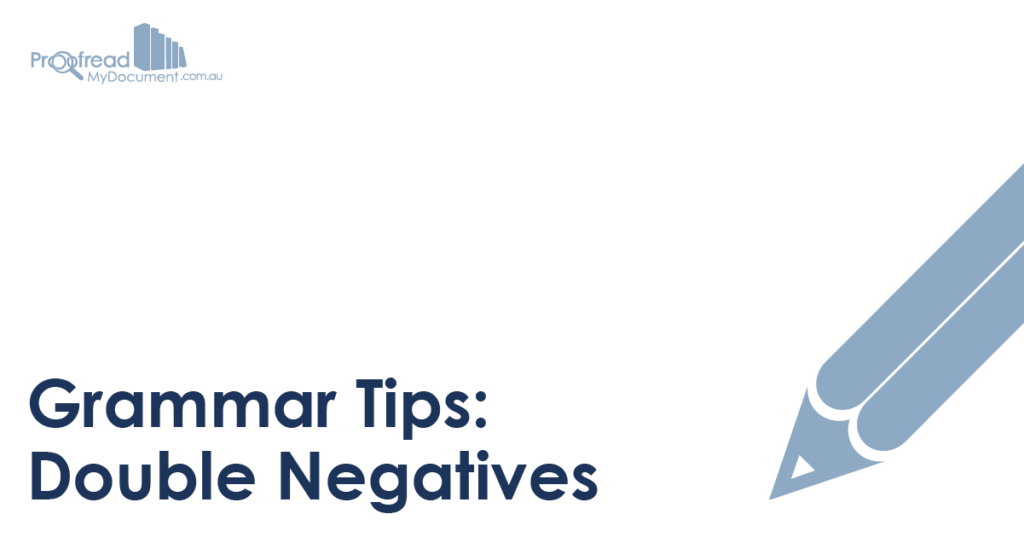Have you ever heard somebody say, ‘I didn’t do nothing’? If so, how did it make you feel? If the answer is ‘repulsed’, you may have an aversion to double negatives.
But what are double negatives? And why should we avoid using them, particularly in written English? Read on to find out.
What is a Double Negative?
When we talk about double negatives, it’s usually when two negative words are used together incorrectly. ‘I didn’t do nothing’ is confusing because the negatives ‘didn’t’ and ‘nothing’ cancel each other out, making the sentence positive:
I didn’t do nothing. = I did something.
To ensure this sentence is read correctly, one of the negatives should be a positive:
I didn’t do anything.
OR
I did nothing.
Find this useful?
Subscribe to our newsletter and get writing tips from our editors straight to your inbox.
By only using one negative term, the sentence becomes clearer.
(Photo: Keith McDuffee/flickr)
Double negatives such as ‘I didn’t do nothing’ can be used in creative writing, where they can evoke a particular voice or dialect (imagine someone pleading their innocence). But in formal writing this kind of double negative is always incorrect.
Exceptions to the Rule
As this is English, there are exceptions to the rule about avoiding double negatives. Sometimes a double negative can be used to express something positive.
The phrase ‘not bad’, for instance, combines two negatives (‘not’ and ‘bad’) to express a positive (i.e. telling someone you’re ‘not bad’ to mean you’re well).
(Image: MEME TN/flickr)
In these cases, we deliberately use two negatives that cancel each other out to suggest a positive. This is very different to ‘I didn’t do nothing’, where using two negatives could make the meaning of the sentence less clear.
Which Should I Use?
To ensure that you use double negatives correctly, think about the meaning of the sentence. If you want to express something negative, then remember that two negative terms in one sentence can cancel each other out.
Think about the context, too. While double negatives such as ‘not bad’ are fine in informal or semi-formal English, they may be considered inappropriate in formal writing.
